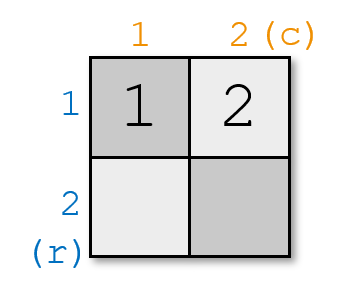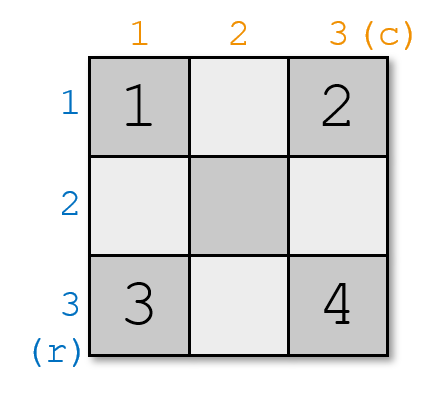| Codeforces Round 564 (Div. 2) |
|---|
| Finished |
Nauuo is a girl who loves playing chess.
One day she invented a game by herself which needs $$$n$$$ chess pieces to play on a $$$m\times m$$$ chessboard. The rows and columns are numbered from $$$1$$$ to $$$m$$$. We denote a cell on the intersection of the $$$r$$$-th row and $$$c$$$-th column as $$$(r,c)$$$.
The game's goal is to place $$$n$$$ chess pieces numbered from $$$1$$$ to $$$n$$$ on the chessboard, the $$$i$$$-th piece lies on $$$(r_i,\,c_i)$$$, while the following rule is satisfied: for all pairs of pieces $$$i$$$ and $$$j$$$, $$$|r_i-r_j|+|c_i-c_j|\ge|i-j|$$$. Here $$$|x|$$$ means the absolute value of $$$x$$$.
However, Nauuo discovered that sometimes she couldn't find a solution because the chessboard was too small.
She wants to find the smallest chessboard on which she can put $$$n$$$ pieces according to the rules.
She also wonders how to place the pieces on such a chessboard. Can you help her?
The only line contains a single integer $$$n$$$ ($$$1\le n\le 1000$$$) — the number of chess pieces for the game.
The first line contains a single integer — the minimum value of $$$m$$$, where $$$m$$$ is the length of sides of the suitable chessboard.
The $$$i$$$-th of the next $$$n$$$ lines contains two integers $$$r_i$$$ and $$$c_i$$$ ($$$1\le r_i,c_i\le m$$$) — the coordinates of the $$$i$$$-th chess piece.
If there are multiple answers, print any.
2
2 1 1 1 2
4
3 1 1 1 3 3 1 3 3
In the first example, you can't place the two pieces on a $$$1\times1$$$ chessboard without breaking the rule. But you can place two pieces on a $$$2\times2$$$ chessboard like this:

In the second example, you can't place four pieces on a $$$2\times2$$$ chessboard without breaking the rule. For example, if you place the pieces like this:

then $$$|r_1-r_3|+|c_1-c_3|=|1-2|+|1-1|=1$$$, $$$|1-3|=2$$$, $$$1<2$$$; and $$$|r_1-r_4|+|c_1-c_4|=|1-2|+|1-2|=2$$$, $$$|1-4|=3$$$, $$$2<3$$$. It doesn't satisfy the rule.
However, on a $$$3\times3$$$ chessboard, you can place four pieces like this:

| Name |
|---|




